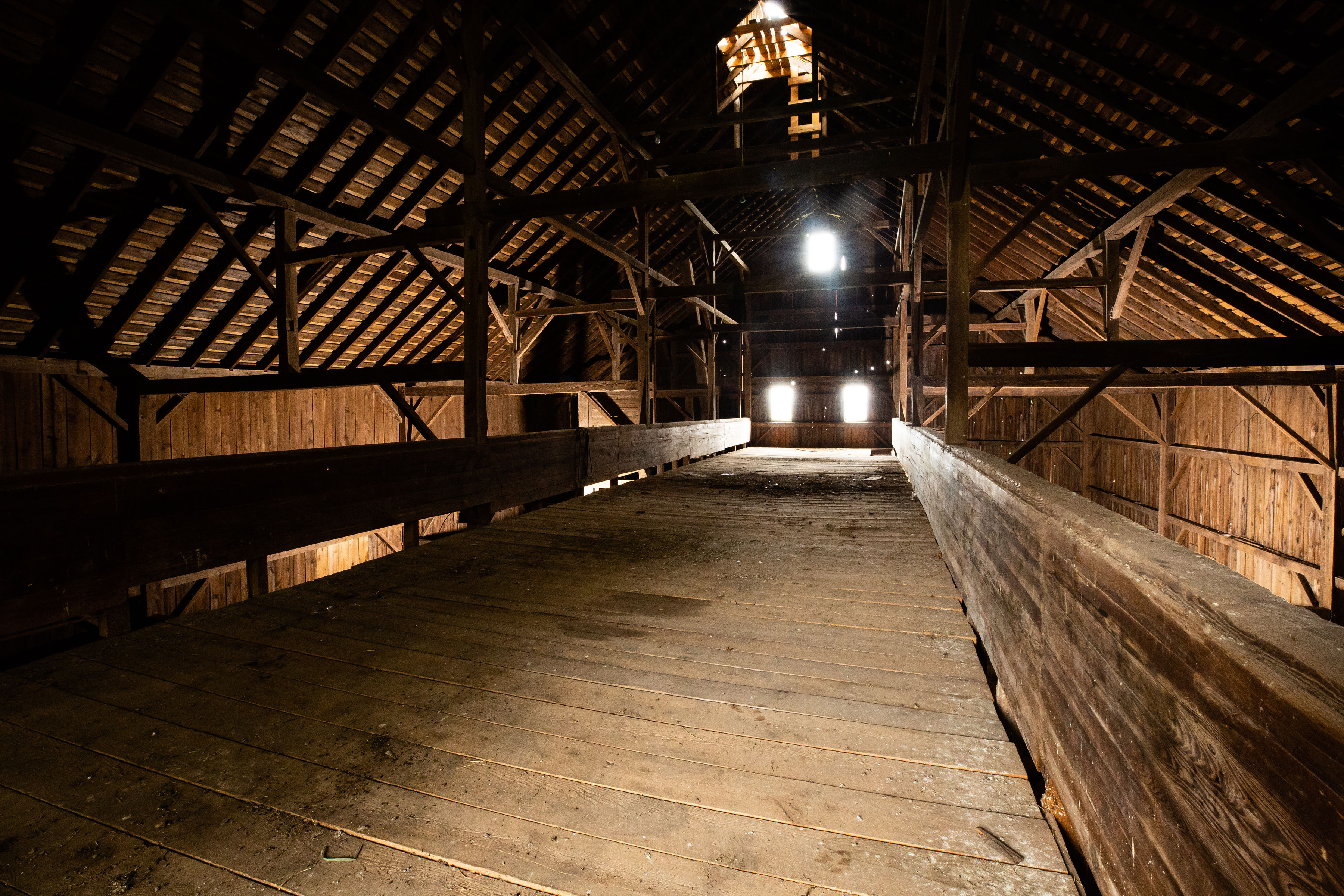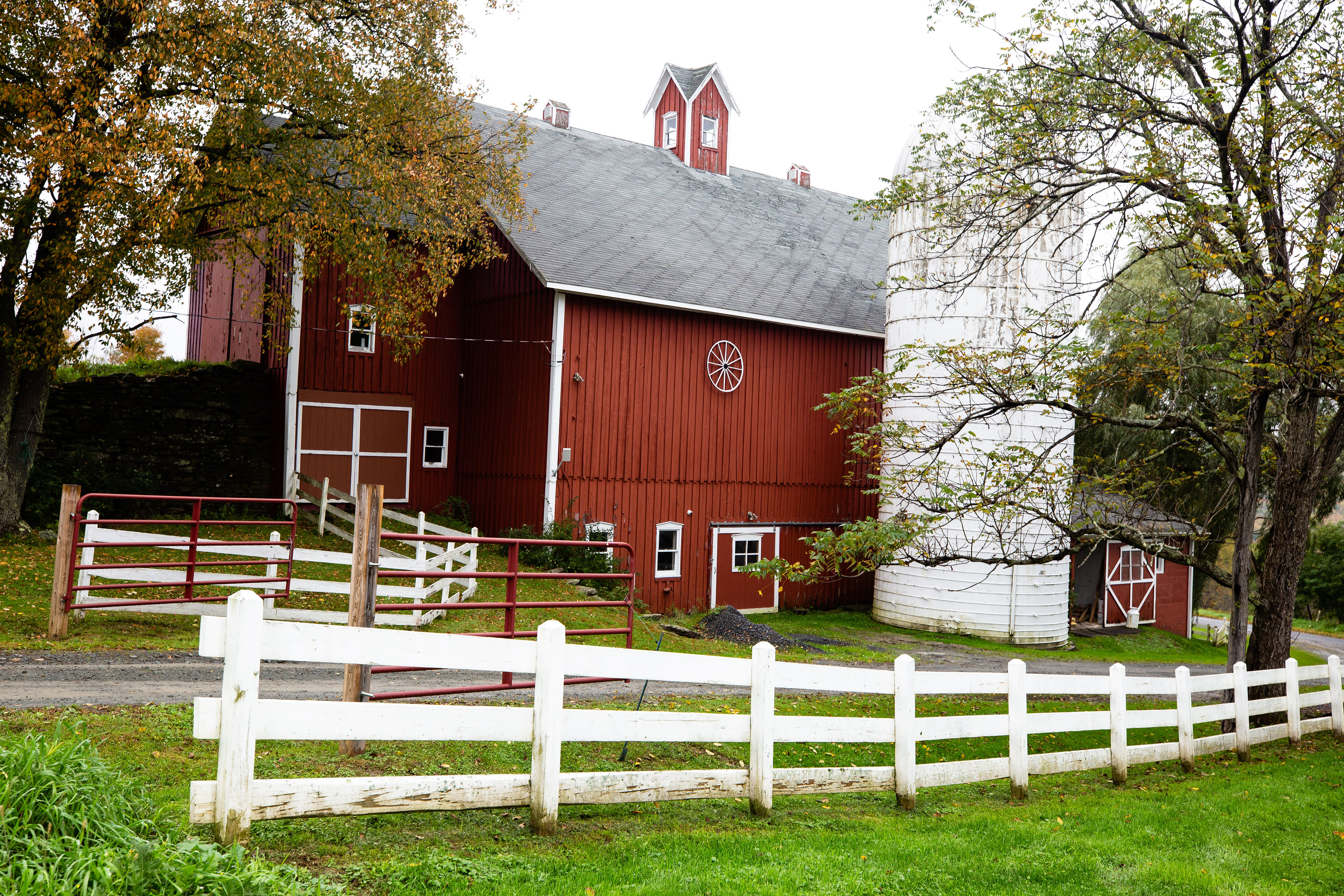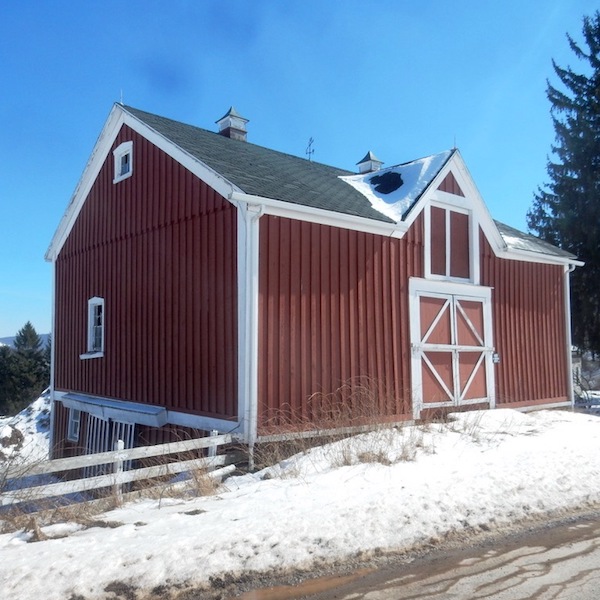The Barns at The Uplands

The picturesque red barns at the Uplands Center on Dunk Hill Road are a vestige of the dairy industry of the Walton area in the late 1880s to mid-1900s. The barns are located on two individual land parcels on Dunk Hill Road which were home to notable, early Walton settlers.
Both parcels were part of the Peter Van Brugh Livingston Land Patent (lots 60 and 76) granted in colonial times by the King of England. The parcel at 2410 Dunk Hill Road was first settled in 1808 by the family of a Revolutionary War soldier and prisoner of war, Levi Hanford, who is buried on site in the tiny Hanford Family Cemetery. The parcel contiguous to the north at 2641 Dunk Hill Road was settled by a Scottish immigrant, Alexander Tweedie, who came to the US in 1849 and farmed on Dunk Hill Road.
These two parcels now comprise the Uplands Center, a not-for-profit wellness retreat center. The barns which still stand on each parcel are a monument to the land’s historic use as active dairy farms in the late 19th to mid-20th centuries and help maintain the rural, agricultural feel of the area.








